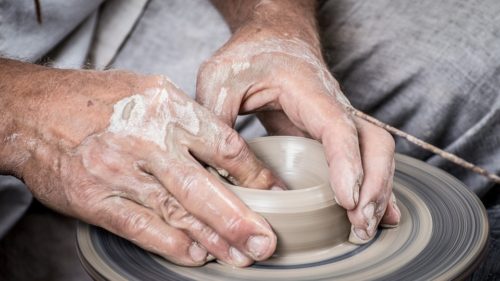Ceramics in St. Louis
An introduction to ceramics and pottery art

Ceramics is a word that has Greek origins and the word in Greek means pottery. The Greek word Keramos was derived from a Sanskrit root that refers to the act of burning. Thus, ceramics loosely means a burned substance or even burned earth. Ceramic objects are made from clay and pottery is just one manifestation of the ceramic universe. Today, the demand for new materials having properties that address certain requirements has meant that an entire new branch of science and/or engineering is devoted to making these materials.
What exactly is ceramics?
Ceramics is the materials scientific world’s oldest branch. Ceramics are a material that is made out of metal or non-metallic compounds which are heated first and then cooled. The material is hard and does not corrode and is quite brittle as well. We are all familiar with domestic wares that are primarily made out of clay. In the modern world, ceramics are not always a material made out of clay. Advanced ceramics in fact are very strong and hard-wearing and are used in demanding applications in engineering and medicine.
Tiles, pots etc.
However, to the common man ceramics is a term that evokes images of tiles and pots as well as artware and dinnerware. It also makes us think of pottery and bricks and toilets. These products are closely linked to ceramics that are silicon based. The thing that sets ceramics apart is they are able to withstand high temperatures. Ceramics are made up of a variety of materials – each of which has its own unique and special properties. Silicon carbide is an example of the material used in ceramics. Ceramics’ properties include having low density, toughness, ability to withstand high temperatures and being resistant to oxidation.
Pottery art
Pottery art is another very old craft that dates back to ancient times. In fact, its history goes back to about 4000 BC when it was being used in Egypt and 3000 BC when it was used in China. There are contrasting theories about how the potter’s wheel was first invented. Most of the pottery works were at first made in the Middle East and in the Orient.
Industrial Revolution
With the Industrial Revolution, pottery making became known in France and England as well as in Germany and various parts of Europe. From being a village craft, it transformed into a mass-produced craft. Bisque firing is one of the offshoots of the Industrial Revolution. Prior to this, for many thousands of years, pots had to be baked with a process called single firing.
The Industrial Revolution put paid to the traditional craft which soon disappeared in many of the industrialized nations.
In fact, it only survived in some parts of China and Japan as well as in many Third World countries. Then came a person called Bernard leach who learned the craft under a Japanese tutor. He along with his friend then opened up a pottery shop in England which continues to operate to this day. His influence changed the course of pottery art in America and was greatly instrumental in reviving the craft and art of creating and firing vessels made out of earth.